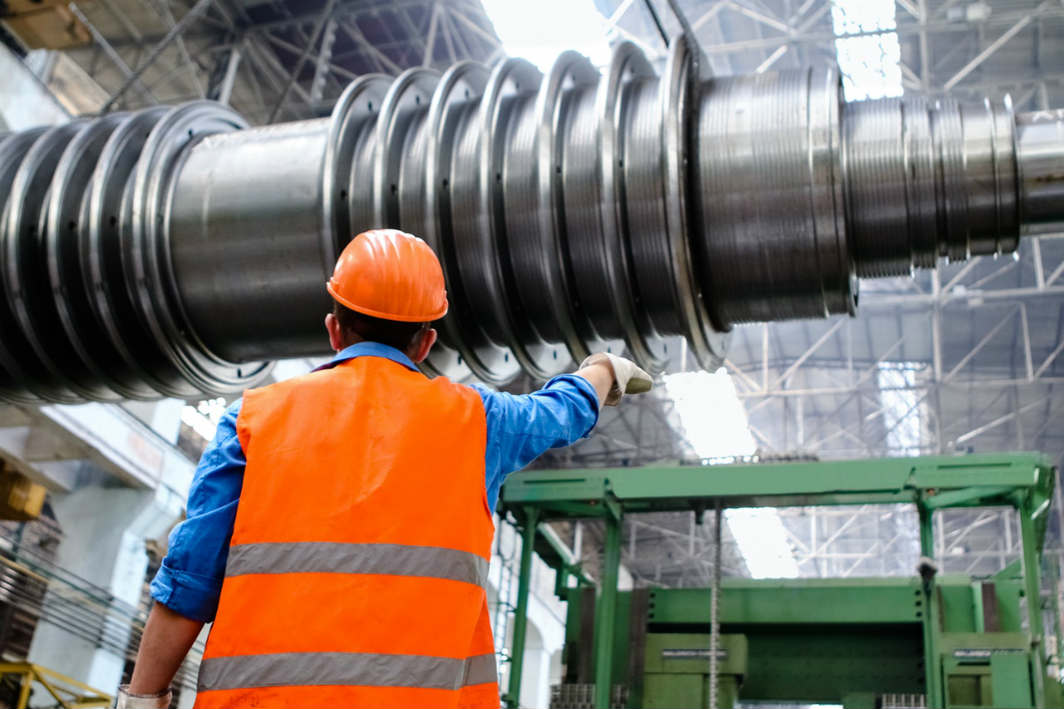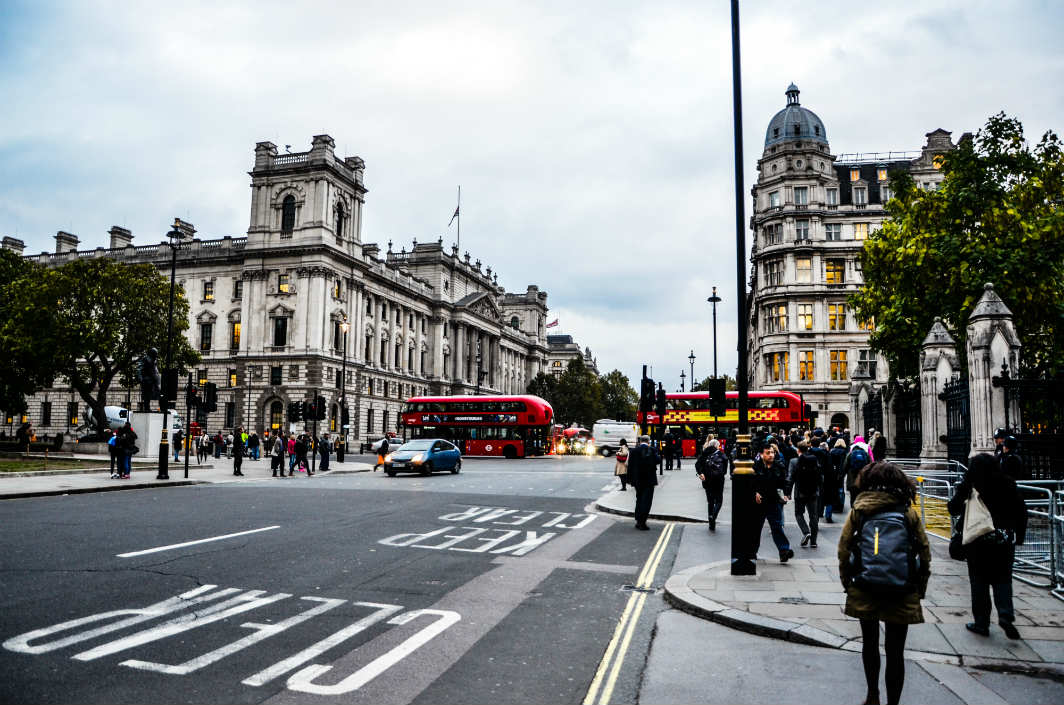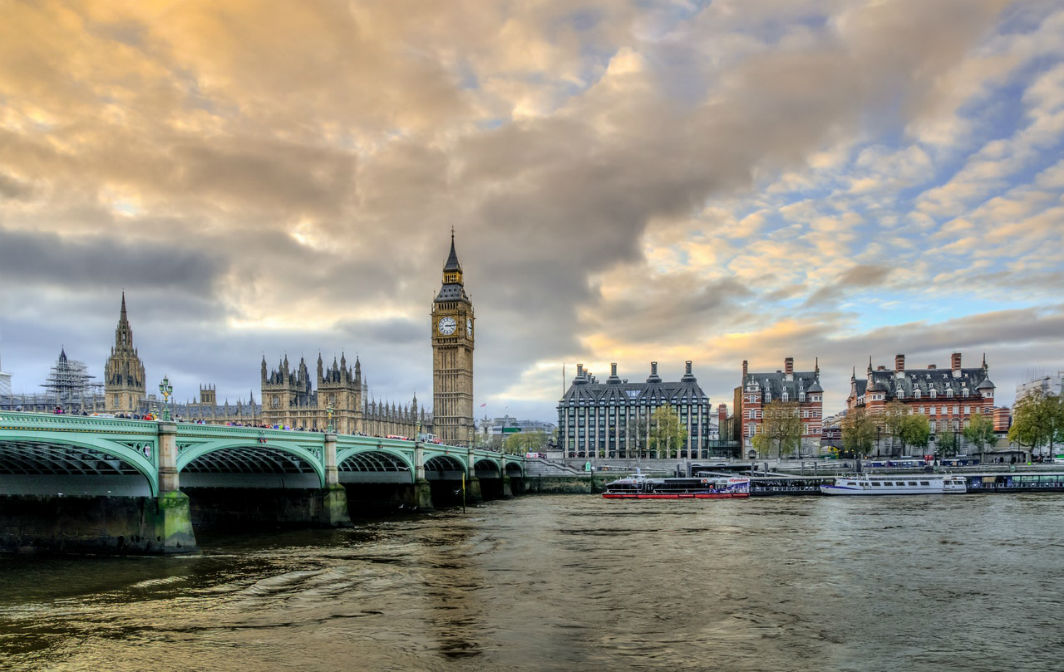The UK is on track to miss its net zero target. How do we get there?
“This is Thermopylae. This is Agincourt. This is Dunkirk. This is the Battle of the Bulge. This is 9/11.” Former US vice-president Al Gore spoke passionately about the climate emergency at the World Economic Forum in Davos last week.
The UK government showed its commitment to the fight last year by making its climate target legally binding, becoming the first major economy in the world to pass laws committing itself to net zero emissions by 2050. This commitment was re-stated in the Conservative manifesto ahead of December’s election. But is the UK on track to meet this target?
A May 2019 report from independent advisory body the Committee on Climate Change (CCC) warned that net zero by 2050 “is only credible if policies are introduced to match”. It highlighted areas in need of urgent work: housing, industrial emissions, carbon capture and storage, road transport, agriculture, aviation and shipping. How are we doing in these key areas?
Housing

A February 2019 report on housing from the CCC warns: “UK homes are not fit for the future.” We can’t meet the 2050 deadline without making UK homes almost completely emission-free, but progress in reducing emissions from housing has stalled in recent years. In 2019, only 1% of new-builds had an energy efficiency rating of A, and the figure for existing homes was less than 0.1%. The scrapping of the Code for Sustainable Homes in 2015 and the end of the Zero Carbon Homes policy in 2016 will have contributed to this situation.
Meanwhile, energy use within homes, which accounts for about 14% of UK greenhouse gas emissions, has actually increased.
To get to net zero, we will need to:
Improve the energy efficiency of both new and existing homes. For example, there are about six million homes where cavity wall insulation could be installed cost-effectively, and of these, four million are described as “easy to treat”.
Support the uptake of low-carbon domestic heating, such as heat pumps. Only about a million homes currently have low-carbon heat.
Upskill the construction workforce. We need workers in the sector to have skills and knowledge specific to low-carbon homes.
The health cost to the NHS of conditions exacerbated by poor housing is estimated to be £1.4 – £2 billion a year in England alone, so measures like these would pay for themselves.
Carbon capture and storage

This is the process of trapping the carbon emissions generated from burning fossil fuels and storing them in a way that stops them contributing to the heating of the atmosphere. The UK has yet to develop its first carbon capture and storage facility. To slow progress further, in 2015 the government axed the Carbon Capture and Storage Competition, a billion-pound grant for developing new technology in this area.
Now ministers say that the first carbon capture and storage project will be operational by the mid-2020s. The Acorn Project in Aberdeenshire will capture CO2 from a natural gas processing plant and use existing pipelines to transport it for storage in previously depleted gas fields. In other words, the pipes we put in place to extract natural gas will now be used to put it back underground! But one project will do very little to help us reach the 2050 target.
To get to net zero, we will need to:
Overcome the cost barrier. The CCC describes heavy investment in carbon capture and storage as “a necessity, not an option”. However, it is expensive and the UK government sees cost as a serious barrier. It has created a Cost Challenge Taskforce to look into ways of deploying carbon capture and storage at scale during the 2030s, “subject to costs coming down sufficiently”. But if this technology is a necessity for meeting net zero, we can’t afford to make investment conditional on lower costs.
Industrial emissions

Industry only contributes about 18% of the UK’s economic output, compared to a global average of 25%. (The service sector is much more important, contributing about 80% of GDP.) This means that we have significantly lower industrial emissions per person than the global average.
To get to net zero, we will need to:
Invest heavily in carbon capture and storage for industry. As explained above, this is a necessity. We’ll need to develop a whole new infrastructure for this.
Develop hydrogen production. The CCC says that large-scale hydrogen production should start by 2030.
Move away from fossil fuels. Some sectors aren’t suitable for carbon capture and storage, but they can reduce their carbon emissions by deploying hydrogen, electrification or bioenergy for their processes – if the infrastructure is created to allow them to do so.
Avoid “offshoring”. There is a risk that introducing measures to decarbonise industry in the UK will result in pushing our industrial activity overseas, which will do nothing to reduce global emissions. We need a policy framework that makes it attractive for the industrial sector to remain in the UK while reducing emissions.
The UK has already managed to reduce emissions while increasing economic output, and the government’s Clean Growth Strategy commits to continuing along the same path.
Road transport

Road transport contributes about a fifth of our greenhouse gas emissions, according to the Office of National Statistics (ONS). Both traffic volumes and vehicle emissions are increasing, but one tiny silver lining is that the increase in emissions is lagging behind the increase in the number of vehicles on the road. This is thanks to various factors such as better fuel efficiency and stricter regulations on exhaust pollution. Diesel, which produces slightly less CO2, has been used more than petrol since 2005.
To get to net zero, we will need to:
Drive less for short journeys. Research from the RAC tells us that over half of all journeys over a mile are currently made by car, while 40% of respondents to an ONS survey admitted that they could have easily walked instead for journeys under two miles. To change this behaviour, we need infrastructure to make cycling and walking safer and more convenient: off-road paths, protected bike lanes, wider and better maintained pavements.
Drive less for longer journeys. The cost of using trains and buses has rocketed in recent years, while the cost of motoring has risen much more slowly. The freeze on fuel duty and abolition of public transport subsidies has contributed to this. Again, for a modal shift we need to reverse this trend and make driving more expensive than taking public transport.
Support the switch to electric. The CCC estimates that for us to meet our target of net zero by 2050, all cars on UK roads will have to be ULEVs (ultra-low-emission vehicles) by 2050.Currently, less than 0.5% of distances driven are by low-carbon (electric or hybrid) vehicles and about 2% for cars run on biofuels. The cost of batteries for electric vehicles is falling, but the massive changes involved won’t happen without nationwide infrastructure such as a network of charging points.
Phase out petrol and diesel sooner. The government has committed to phase out petrol and diesel cars by 2040, but this is too late, according to the CCC. They recommend an earlier deadline of 2030.
According to Public Health England, the total (UK-wide) cost to the NHS of treating health problems caused by air pollution was about £42.88 million in 2017. (That figure rises to £157 million if you include diseases where the link to air pollution is possible but not fully proven.) It is predicted to cost us at least £1.6 billion by 2025. Decarbonising our road transport would reduce NHS costs significantly, and the Royal College of Physicians says it would also save 5,700 lives each year.
Agriculture

It appears that some emissions from agriculture are unavoidable, so to reach net zero these will have to be balanced with other carbon removal work, such as creating or improving carbon “sinks” by planting trees on farmland. Agriculture and land use is a devolved issue, so each nation within the UK will have to make decisions about the impact of its farming sector.
To get to net zero, we will need to:
Reduce livestock farming. The CCC was in the headlines last week for stating that we need to reduce the amount of beef, lamb and dairy we eat by a fifth. They believe this would mean healthier diets overall and significant health benefits.
Change our land use. The CCC say that we need to repurpose a fifth of our agricultural land for tree planting, energy crops and peatland restoration.
Restore peatlands. Peatlands are one of the most effective forms of carbon storage on the planet. They also help us to adapt to the changing climate by mitigating the worst effects of flooding and drought. We would need to restore 20,000 hectares per year by 2050.
The total cost of all the measures suggested by the CCC in the agricultural sector (under £2 billion) is less than the UK currently pays to subsidise farmers under the Common Agricultural Policy (£3 billion).
Aviation

Flying accounts for about 6% of the UK’s greenhouse emissions and if current trends continue, this will reach 25% by 2050. It is not completely clear if the government’s net zero target includes emissions from international aviation and shipping; an explanatory memorandum issued alongside the legislation last year spoke of “leaving headroom” for these emissions in carbon budgets.
Heathrow is responsible for more CO2 emissions from international scheduled passenger flights than any other airport in the world. Meanwhile, the UK (along with other countries) has breached international obligations with its failure to disclose details of how it intends to cut emissions in this sector.
Most climate research organisations acknowledge that it is impossible to cut aviation emissions to zero by 2050, but suggested measures to mitigate the damage include:
Work with other countries. Aviation is by its nature an international issue, and the UK has a role to play in negotiating international emissions targets through the International Civil Aviation Organization.
Limit air passenger demand. The most obvious mechanism for this is pricing, but other measures could include limiting capacity by putting an end to airport expansion and making high-speed rail a cheap and convenient alternative to short-haul flights.
Some in the industry have also suggested that technological advances will lower the carbon footprint of planes. The world’s first fully electric commercial aircraft made its first flight last year, but there is no evidence that this will become widespread quickly enough to meet our target. Other improvements include lighter and more fuel-efficient planes and the possibility of using alternative fuels. The CCC warns: “Synthetic fuels should not be a priority for government policy.” Industry has not yet demonstrated that these fuels would be genuinely low-carbon or cost-competitive. A focus on technological fixes for aviation is a waste of effort that could be better spent elsewhere.
Shipping

As with aviation, we can’t be sure if international shipping is included in the 2050 target or not, but the government’s Maritime 2050 strategy sets out ambitious plans for decarbonising the UK shipping sector. It calls for all ships ordered from 2025 to be capable of zero emissions and launches a £1 million competition to find innovative ways to reduce maritime emissions.
What else can we do?
Keep working with the IMO. The UK is a strong voice in the International Maritime Organisation (IMO) and we can use this voice to push for more ambitious emissions reductions in the sector.
Invest in hydrogen. Shipping depends on diesel, but hydrogen-powered ship propulsion may be possible in the future. The CCC says that for hydrogen to be a realistic possibility for shipping and industry, we would need a hydrogen production capacity equivalent to today’s fleet of gas-fired power stations.
Energy transition

The International Panel on Climate Change (IPCC) produced a special report in 2018 about what the world needs to do to keep global warming below 1.5C. They have various models for how this can be achieved, but the overall message is that we need a significant energy transition away from fossil fuels and towards renewables.
To get to net zero, we will need to:
Keep moving away from coal. In the UK, both production and consumption of coal have been falling in recent years and in May 2019 the National Grid recorded its first ever coal-free day. The government has pledged to close all coal-fired power stations by 2025 and seems to be on track with this. When the Fiddler’s Ferry plant in Cheshire closes in March, we will only have four coal power plants left.
Invest in renewables. The Conservative manifesto before the December election sets an offshore wind target of 40 gigawatts by 2030. Other renewables don’t get a mention in the manifesto beyond a general statement that the government will be “increasing our commitment to renewables”, but in general, renewables’ share of our energy consumption and production is growing.
Invest heavily in carbon capture and storage. We’ve mentioned this before, but that’s because it’s important for many sectors. The IPCC modelling suggests that natural gas could remain a significant part of the UK’s energy mix, but only if we have the carbon capture and storage infrastructure in place to minimise the emissions from this source.
The CCC points out that transitioning to lower-carbon energy sources will reduce the UK’s reliance on imported fossil fuels, making our economy less vulnerable to price fluctuations. However, it cautions that this energy transition should be handled with consideration for people whose livelihoods depend on fossil fuel extraction, because we can’t meet our 2050 target without getting rid of jobs in oil and gas. Many of the regions with high levels of employment in the oil and gas sectors are regions with significant potential for new jobs in the renewable energy sector.
Looking at progress so far in the key areas identified by the CCC as needing urgent action, it seems clear that we are not yet on track to meet our own legally-binding target. To have a realistic chance of achieving our goal, the new government will have to announce big changes in its spending and policy priorities from 2020 onwards.
We’ll be keeping an eye on the UK’s net zero progress – check the Hub for more updates and analysis.













